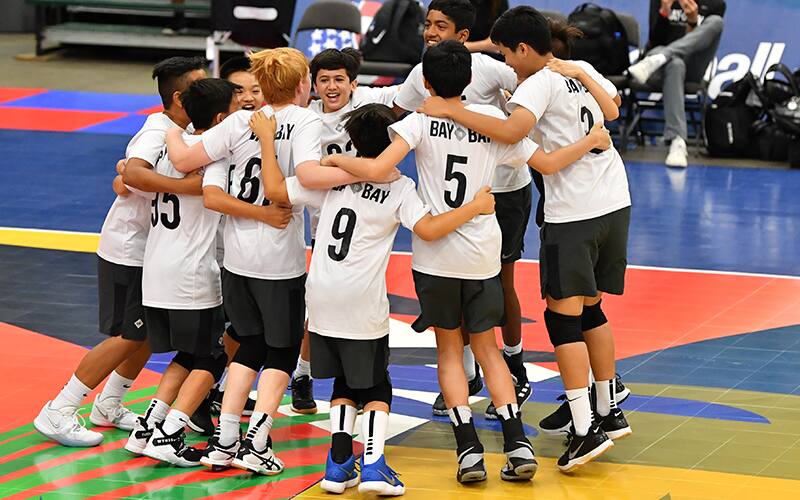
Every volleyball player makes errors. We’re all guilty of missteps that cause us to fall short of our goals. Errors are mostly perceived as bad, but if we look at errors at multiple levels, they provide valuable learning opportunities. Let’s look at the different types of errors.
Mental Errors
For several categories of mental errors, the term “error” may even be a misnomer as these tend to be more of a shortcoming than in-the-moment mistake. Examples of mental errors may be:
- Players being unprepared for a match.
- An attitude that negatively impacts a player or their teammates.
- A lack of confidence that limits a player’s contributions.
- Poor focus that leads to unforced errors.
To what extent are mental errors good/bad?
Although there’s often a teachable moment (which may be as simple as “now you see where mental errors hurt performance”), mental errors offer little growth potential to players and teams. Does that mean mental errors should never be tolerated? It depends on the experience and maturity of the players. More experienced players likely understand the importance of avoiding those errors. While there may be circumstances where experienced players are susceptible to mental errors, they also know that another player may replace them if mental errors are impacting their performance.
Younger and newer players are even more vulnerable to mental errors. Coaches should strive to have their players identify and resolve mental errors going forward as players gain more experience and maturity.
Strategic Errors
A strategic error normally involves the decision-making process. Whether it’s a choice of attack trajectory, who the setter elects to set or even which zone a player chooses to serve, players’ decisions have a strategic component.
Most strategic errors occur in the most controlled part of a volleyball match: before a rally when both teams prepare for serve or serve receive, and also, when teams are in-system. Then, players are more able to make strategic decisions about where or how they should play the ball.
To what extent are strategic errors good/bad?
There are some learning opportunities from general strategic errors. Is a high-risk serve a good strategic decision when it’s set point? Does a specific strategic plan prove successful in all situations (even if our opponents know what we are attempting to do)?
It’s important to note that an unsuccessful result does not necessarily mean that a strategic error was made. In the same breath, a positive result may not confirm a good strategic decision either. The randomness of volleyball can often run interference with analysis of strategic decisions and the errors that may accompany them.
Strategic errors are unique because they may be influenced by the opponent. A strategic error against one opponent may not be one against another. If a game plan limits opportunities for success against a specific opponent, what other strategy would offer a better result?
Execution Errors
When a player unsuccessfully performs a volleyball skill, that is an execution error. These errors are more frequent at earlier ages and levels of volleyball. Players are often still building their skills and continuing to physically mature. It’s important to remember that players are growing and improving on much different timelines, as well.
Likewise, execution errors are much less frequent at the more advanced levels as those players are most likely more experienced and not physically changing as rapidly.
To what extent are execution errors good/bad?
Execution errors can be tremendous learning opportunities for younger players in the right environment. The growth of a player’s skill set, no matter their age or experience level, may be stunted if they are not given some leeway in execution errors. A few things to consider in regard to execution errors are:
- How sharp of an angle can each particular outside hitter hit from the left front position?
- How fast can a setter and middle hitter connect on a basic quick set? A 31? A slide?
- How well can back row defenders read the attack from the opponent and position themselves to make the best play?
- Can a server consistently locate their serve in one or more higher-risk positions?
- Is it the right environment for an error? Making execution errors during low-pressure situations like practice can allow players to apply lessons from the error during high-pressure scoring situations.
Take advantage of learning opportunities
Many people talk about the necessity of reducing or eliminating errors in volleyball, and that is certainly true when the results count, like in a match. However, there are a lot of situations where constructive leniency can provide valuable learning opportunities.
Players learn what they can do by pushing the envelope in practice. Coaches learn what their opponents can and cannot do with scouting and game-planning before and during matches. When opportunities are presented to improve, it’s an opportunity to not only become better players and coaches, but also improve results.
